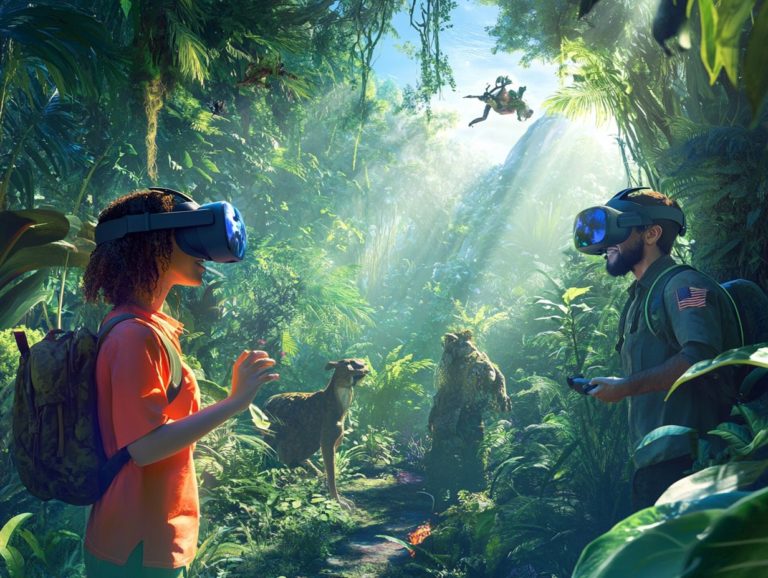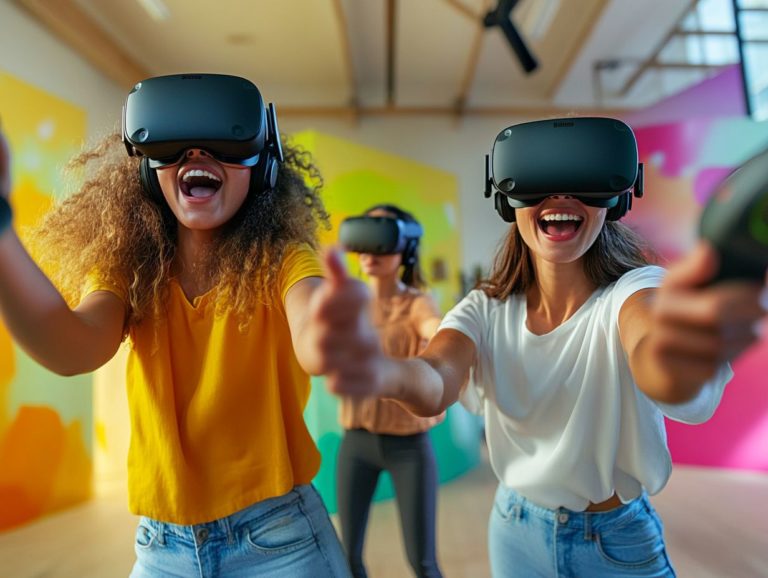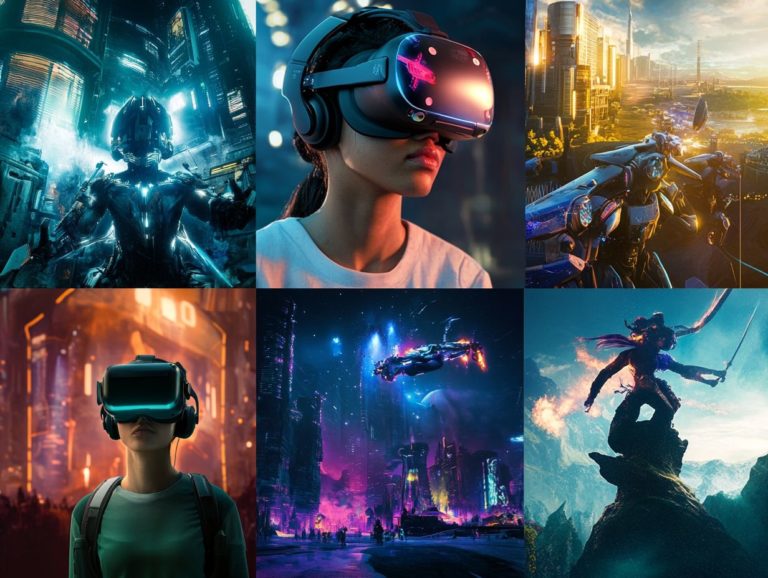understanding vr resolution: what matters?
Virtual reality (VR) has revolutionized your journey through digital realms, with resolution as a cornerstone of that immersive experience.
So, what is VR resolution, and why is it important? This exploration delves into the many factors that shape VR resolution, including essential hardware and software components.
You will discover how resolution is measured and how it influences your visual experience. You will also find valuable tips for enhancing resolution and guidance on selecting the ideal headset tailored to your preferences.
Get ready to supercharge your VR adventures!
Contents
Key Takeaways:
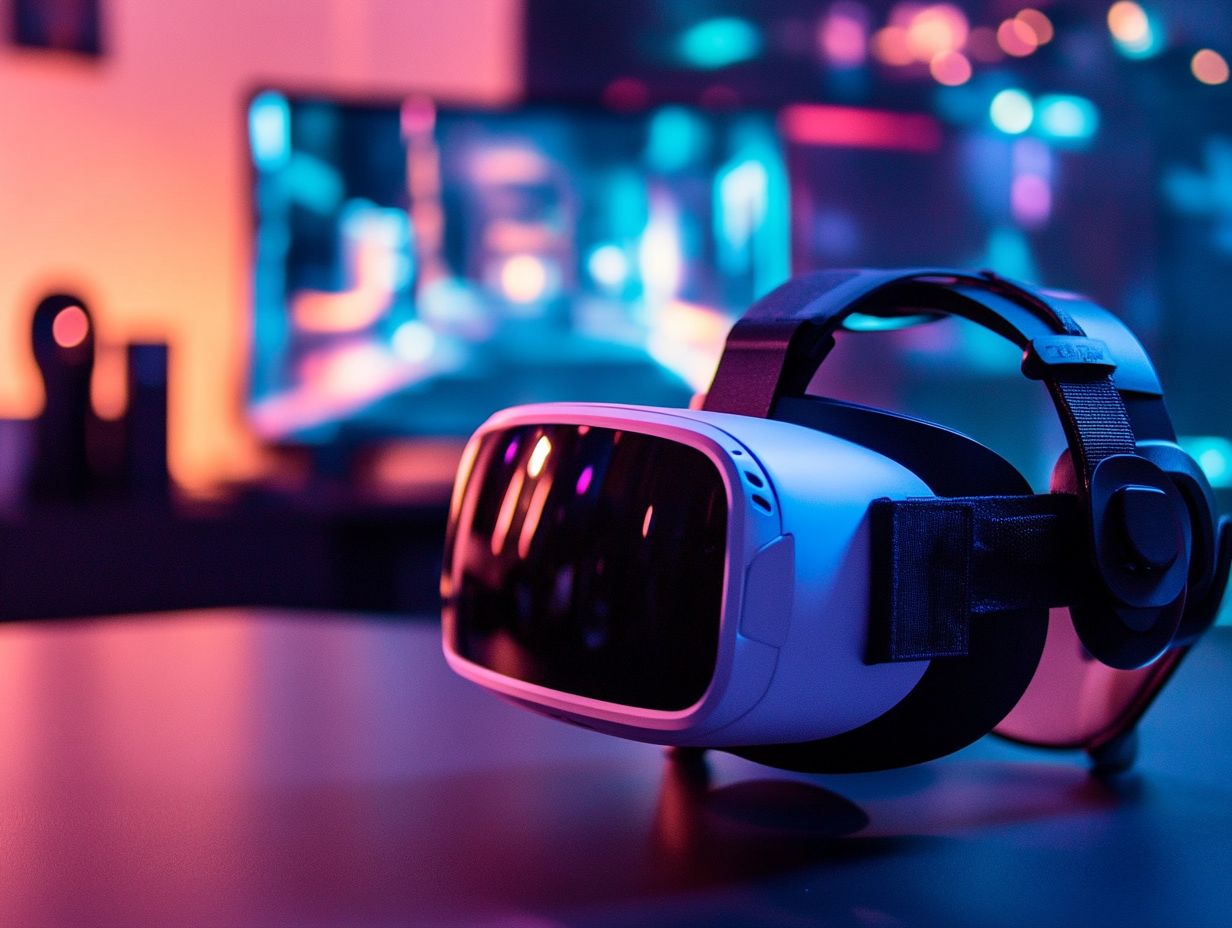
VR resolution measures image sharpness and clarity in a virtual reality experience, influenced by both hardware and software factors. Understanding pixel density, which refers to the amount of detail in an image, and PPI (pixels per inch), is crucial for grasping VR resolution. Improving VR resolution through techniques like increasing pixel density and choosing the right headset can significantly enhance your overall experience and immersion.
What is VR Resolution?
VR resolution relates to the clarity and detail of images in a virtual reality (VR) environment. It is essential for crafting an engaging experience that captivates you. It is typically measured by the total number of pixels rendered on your VR device s native screen, directly influencing how you interact with virtual worlds like those found in DCS or MSFS.
This measurement allows for seamless immersion in digital avionics and gaming adventures.
The importance of VR resolution cannot be overstated, especially regarding pixel density, which is crucial for how lifelike virtual settings appear. Higher resolution values deliver sharper images, enhancing your sense of presence and overall engagement.
Devices such as the CV1, Vive, and HP Reverb G2 showcase different resolutions, each impacting your immersion.
Take the HP Reverb G2, for example; its impressive clarity highlights intricate details, significantly improving your navigation within complex simulations. As technology continues to advance, ongoing enhancements in VR resolution promise to provide even more mesmerizing experiences.
Factors Affecting VR Resolution
Several factors influence VR resolution, including the performance capabilities of your GPU (graphics processing unit), the hardware of your headset, refresh rate (how often the image on the screen updates per second), and frame rate (the number of frames displayed per second). All these elements play a critical role in shaping your overall visual experience in virtual reality applications.
By fine-tuning your display settings and optimizing game performance, you can significantly enhance how VR devices like the Oculus Quest 2 or HP Reverb G2 render graphics. This ensures you enjoy a seamless simulation, free from issues like ghosting or judder.
Hardware and Software Considerations
When selecting VR hardware and software, it s essential to consider the performance costs of different devices and their compatibility with optimized games like DCS, which require robust specifications for smooth operation.
Choosing high-end configurations, such as those featuring Nvidia’s RTX 2070 or RTX 3080ti, can notably enhance your experience by improving resolution and reducing lag during gameplay.
This thoughtful approach not only boosts visual fidelity but also delivers the immersive experience you seek. Finding the right balance between high-performance hardware and finely-tuned software is vital, as it directly affects frame rates and the overall smoothness of your gameplay.
Optimized games are designed to take advantage of these advanced capabilities, ensuring minimal latency while maximizing detail. Different VR devices cater to these requirements in unique ways; some may offer stunning visuals at a premium price, while others prioritize affordability without compromising too much on quality.
Ultimately, selecting the right combination is essential for unlocking the full potential of virtual reality.
Conclusion
Understanding VR resolution is crucial for anyone looking to enhance their virtual reality experiences. By knowing the factors that impact it and how to optimize your setup, you can truly immerse yourself in these digital realms. Dive into the world of VR today and discover your perfect headset!
How VR Resolution is Measured
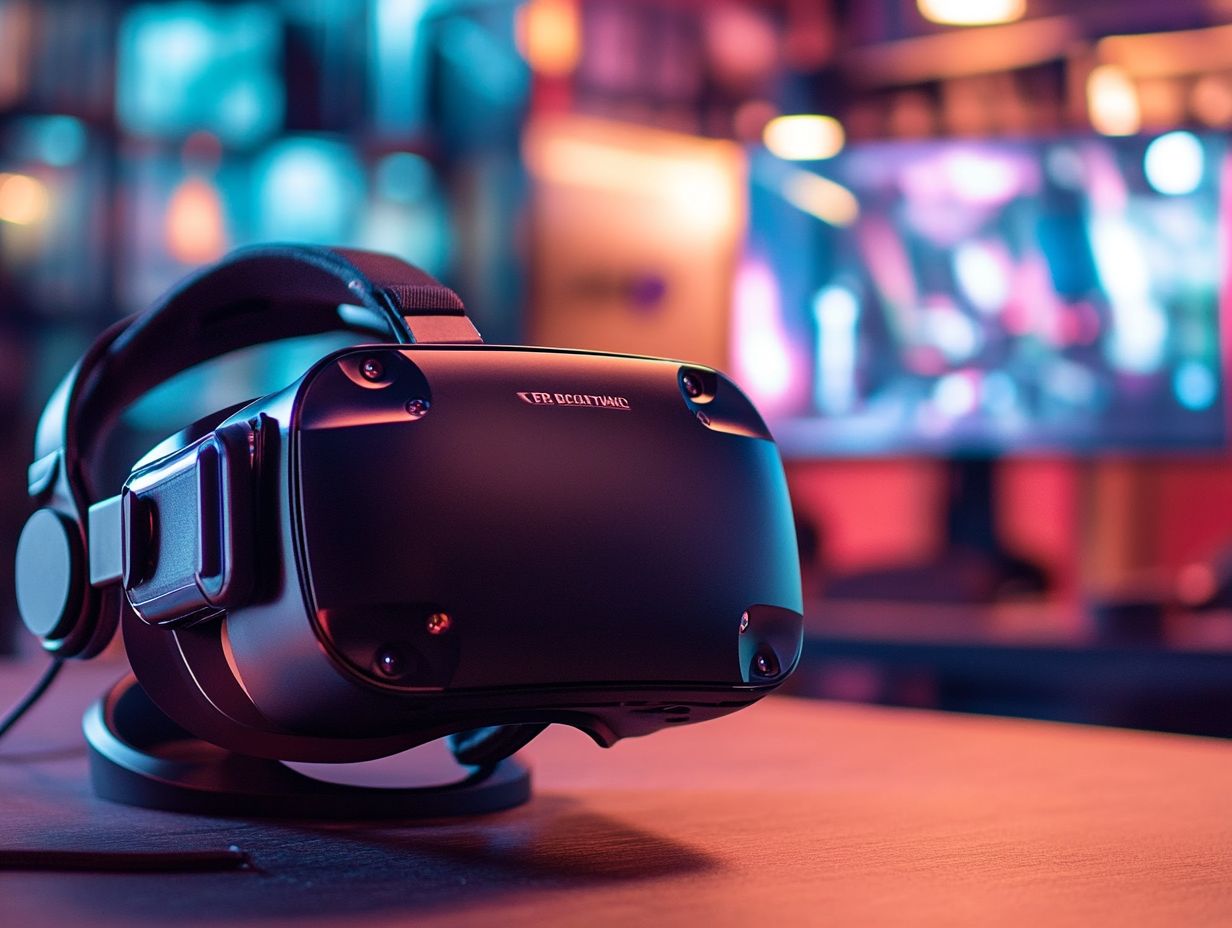
VR resolution is measured by pixel density, expressed in pixels per degree (PPD). This metric quantifies the number of pixels displayed across a specific angle of vision.
Understanding this measurement is crucial, as it directly influences the clarity of images while using VR devices like the CV1 or Vive. It serves as a key indicator of headset performance during resolution-intensive tasks.
Understanding Pixel Density and PPI
Pixel density, measured in pixels per inch (PPI), is essential for the immersive experience provided by VR headsets. Higher pixel density results in clearer images and a richer visual experience, enabling deeper engagement in applications ranging from gaming to advanced digital environments like DCS and MSFS.
This measurement impacts visual quality; as PPI increases, more detail emerges, significantly reducing the screen-door effect that can disrupt immersion.
Recent advancements in headsets such as the HP Reverb G2 and Pimax Crystal highlight the importance of pixel density, pushing the boundaries of what s achievable in virtual reality.
These devices offer elevated PPI levels, resulting in sharper visuals that closely mimic real-world scenarios. As the industry evolves, improving pixel density is vital not just for visual fidelity, but for appreciating the nuances of immersive worlds.
This enhancement sharpens the details of virtual landscapes and interactive elements in simulation games, ensuring a captivating experience.
Importance of VR Resolution
VR resolution is vital it’s what makes or breaks your immersive experience! It directly affects your immersion and visual quality two crucial elements for gaming enthusiasts and professionals seeking a seamless experience in virtual environments.
High-resolution displays allow for smoother interactions and a more authentic portrayal of the virtual world, effectively minimizing issues like VR disorientation, ghosting, or judder that can disrupt your journey.
Impact on Immersion and Visual Quality
The impact of VR resolution on immersion and visual quality is transformative. It shapes how you perceive and interact with virtual environments, significantly influencing your enjoyment and functionality in games.
With a higher-resolution headset, you can fully engage with simulations, especially in complex settings like DCS and MSFS, where clarity is essential. In high-fidelity flight simulators, a higher pixel count lets you read instruments and distant landmarks with remarkable clarity, enhancing your situational awareness.
This heightened visual fidelity affects performance and comfort. Lower resolutions can lead to eye strain and motion sickness during extended play, which nobody wants.
Advancements in VR technology, like foveated rendering a technique that saves computing power by only focusing on what you are looking at in VR and improved refresh rates, amplify this effect. These innovations ensure that as scenes become more complex, your experience remains smooth and engaging.
This is particularly crucial in professional simulations, such as training environments for surgeons or architects, where precise visuals are vital for developing real-world skills.
Improving VR Resolution
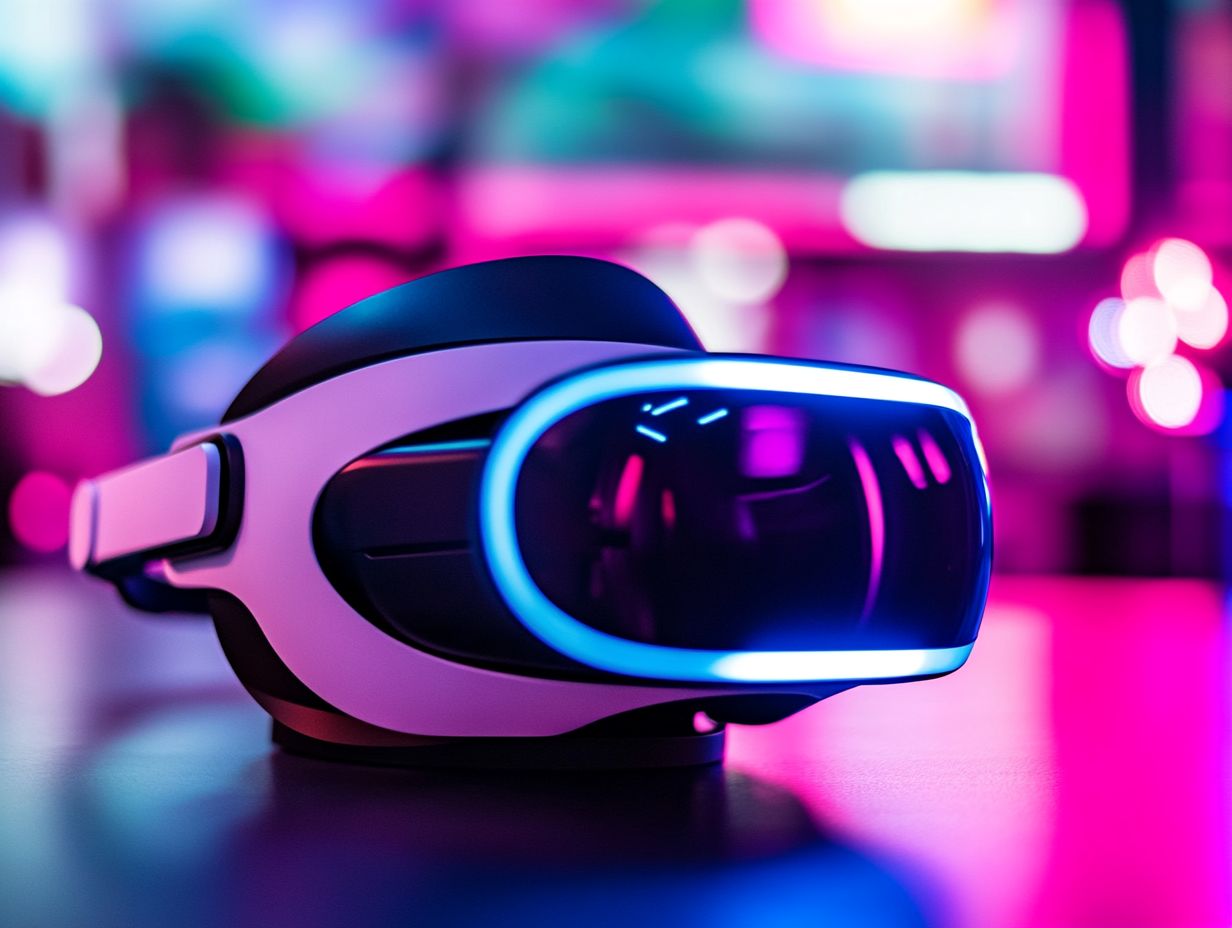
Improving VR resolution requires a thoughtful blend of techniques designed to elevate clarity and enhance visual fidelity in your VR experiences.
Leverage software tools like the Oculus Tray Tool and make hardware adjustments to fine-tune your settings. This approach ensures a more immersive experience while maintaining optimal performance.
Explore your VR settings and adjustments to elevate your experience!
Techniques and Tips for Better Resolution
To achieve better resolution in VR, implement techniques that balance visual quality and performance. Tools like the OpenXR Toolkit help manage performance while enhancing clarity.
Adjusting in-game settings can make a significant difference. Lowering shadow quality or texture resolution increases frame rates while keeping good visuals.
Choose your hardware carefully, like a powerful GPU and a compatible VR headset, for smoother visuals. Watch out for trade-offs; high graphics might slow down frame rates.
Finding the right balance between responsiveness and graphics quality is key. Keep your software and hardware updated to enhance your VR experience.
Choosing the Right VR Headset
Choosing the right VR headset can transform your virtual experience! With so many options available, each designed for different preferences and resolutions, make an informed choice.
Consider headsets like the HP Reverb G2, Oculus Quest 2, and Varjo Aero, examining their specs to align with your needs and desired visual quality.
Comparing Resolution of Popular Headsets
When comparing resolution of popular VR headsets, you’ll see major differences that impact your user experience. Options like the CV1 and Vive, along with newer models like the Pimax Crystal, cater to various needs.
Choosing a headset with higher resolution, like the Pimax Crystal, enhances your visual experience, making environments look lifelike and reducing the screen-door effect. This is crucial for simulations where details matter.
Lower resolution headsets, such as the original CV1, may still be appealing for casual gamers or those on a budget. They offer accessibility and ease of use, making them practical choices.
For high-fidelity gaming, some models have a wider field of view, enhancing your experience by expanding your peripheral vision. This feature is vital in fast-paced scenarios, keeping you engaged and responsive.
Frequently Asked Questions
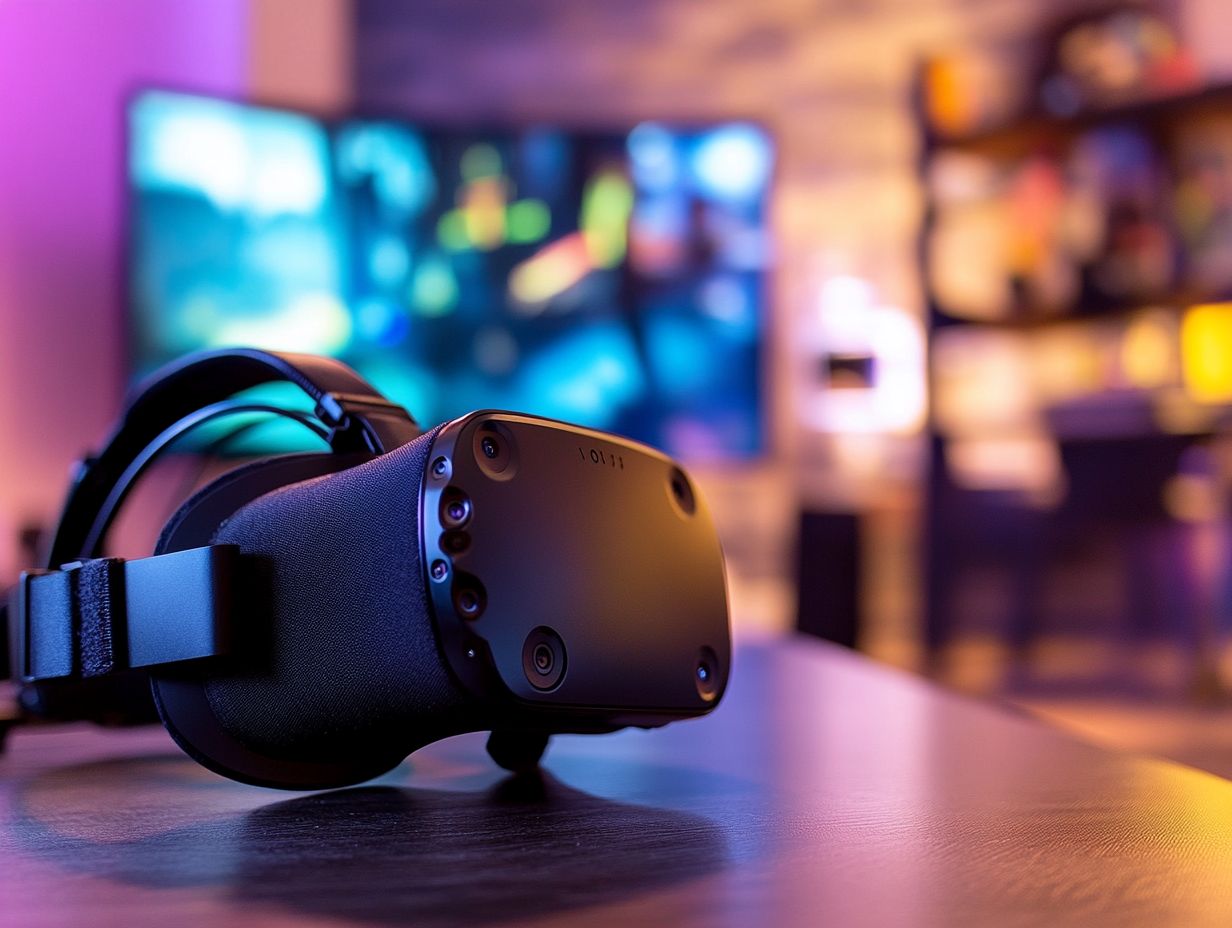
What is VR resolution and why does it matter?
VR resolution refers to the clarity of the visual display in a virtual reality headset. A higher resolution offers a more immersive and realistic experience.
How is VR resolution measured?
VR resolution is measured in pixels per inch (PPI) or dots per inch (DPI). Higher PPI or DPI means sharper, more detailed images.
What is the difference between resolution and field of view in VR?
Resolution indicates the quality of visuals, while field of view (FOV) shows how much of the virtual world you can see. Higher resolution is often more critical for a realistic experience.
What are the common resolution options for VR headsets?
Common resolution options for VR headsets are 1080×1200 pixels per eye and 1440×1600 pixels per eye. Some high-end headsets offer even higher resolutions, like 2160×2160 pixels per eye.
Does the type of display panel used affect VR resolution?
Yes, the type of display affects resolution. LCDs usually have lower resolution than OLEDs, which means less detail. However, LCDs may offer better color accuracy and less motion blur.
Are there any other factors that can impact VR resolution?
Yes, other factors can impact VR resolution. The power of your graphics card plays a crucial role in delivering smooth, high-quality visuals.
If the content isn’t optimized well, it can look blurry or pixelated, no matter how advanced your headset is.
Make sure your graphics card is up to the task!

